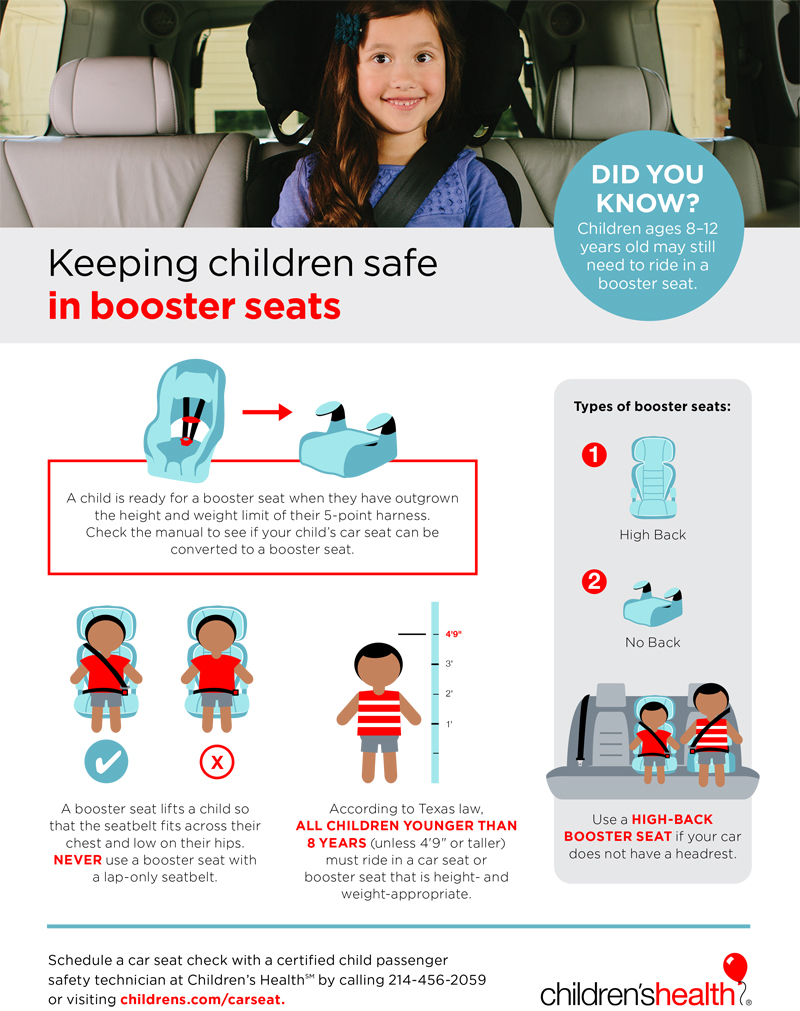

Eventually, your once teeny tiny child will outgrow their car seat. But that doesn't mean they are ready to travel in a car like an adult with only a seat belt. A booster seat helps the seat belt fit your child properly and keeps them safe in case of a car crash. In fact, children are 45% safer in a booster seat as opposed to a seat belt alone. But since there is no specific age that determines when a child can use a booster seat, it's not always clear when it's time to make the switch. See our recommended booster seat guidelines to make sure you don't switch too soon.
Booster seats keep children safe by raising them up so a seat belt fits them properly. When a child is in a booster seat, the belt fits across a child’s body and over their hips, rather than fitting across their face, neck or belly.
There is no specific age when a child should switch from a car seat to a booster seat. A child is ready for a booster seat when they have outgrown the height or weight limit of their 5-point harness car seat. Kids are generally between the ages of 5-9 when they begin to outgrow these limitations.
You can check your car seat's manual for its height and weight limits and if it can be converted to a booster seat. Before you make the move from a car seat to a belt-positioning booster seat, make sure your child meets these requirements:
It's important not to rush the switch to a booster seat. If your child still fits the height and weight requirements of their car seat, that is their safest option.
There are two types of booster seats: high-back and backless.
A booster seat is typically held in place by the child's weight and the vehicle's lap-and-shoulder belt. Some booster seats use your car's lower anchors and LATCH system like a car seat. It's important to read the booster seat instruction manual before installing your child's booster seat. Your car's instruction manual can also help you determine how to properly and safely install the seat. If your car doesn't have headrests, you should use a high-back booster seat.
Here are some important tips to follow when you install your child's booster seat:
Texas law requires that all children use a car seat or booster seat until they are 8 years old or 4 feet 9 inches tall. Even if your child is 8 and it is legal for them to stop using a booster seat, if they are under 4 feet 9 inches tall, you should continue to use a booster seat to keep your child safe. When your child reaches the height requirement, the seat belt will fit them safely and comfortably.
Children should always travel in the back seat of the car, never the front, until they are 13 years old. They should always have the seat belt on their chest, never around their back. The lap belt should rest against their hips, and the shoulder belt should rest in the middle of their shoulder. If it doesn't, you should keep using the booster seat.
Yes, car seats and booster seats do expire. That's because of wear and tear and changing regulations along with recalls and manufacturer testing. In general, car seats expire between 6 and 10 years from the manufacture date.
Before you purchase a used booster seat or borrow one from a friend, check for a recall from the manufacturer's website. Safe Kids also maintains an ongoing list.
If you can't find an expiration date on the bottom or back of the booster seat, you can also check the manufacturer's website for your booster seat brand and information on how to find the expiration date.
Children's Health℠ certified child passenger safety technicians can help you understand what car seat is right for your child and how to install it. Learn more about our car seat services.

You are now subscribed to the Children's Health Family Newsletter. Children's Health will not sell, share or rent your information to third parties. Please read our privacy policy.